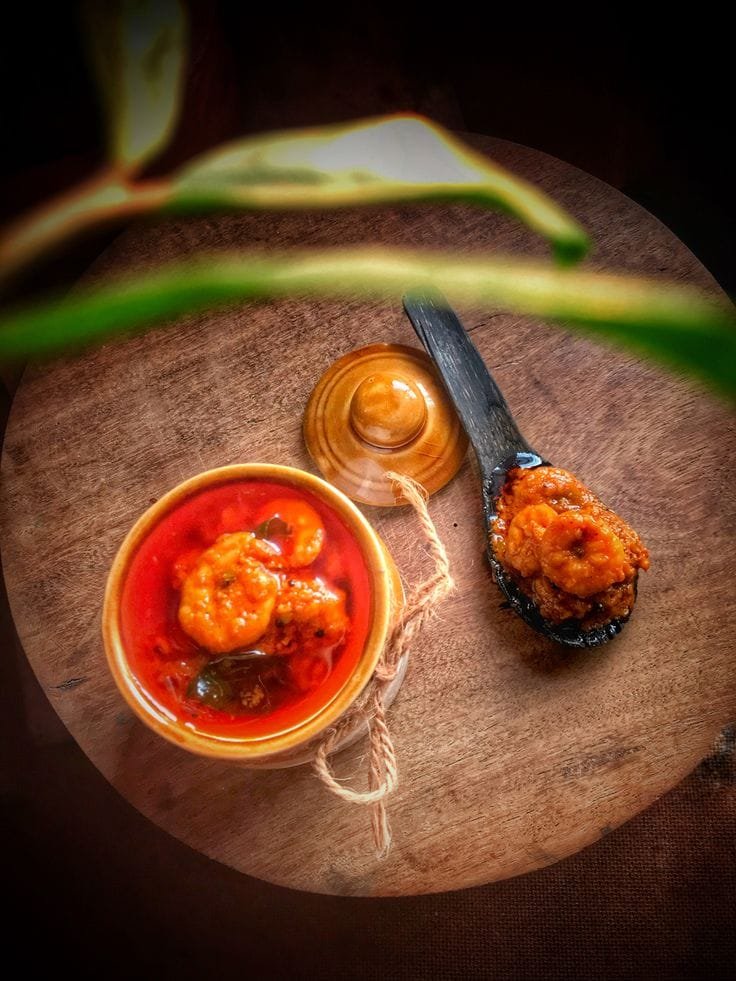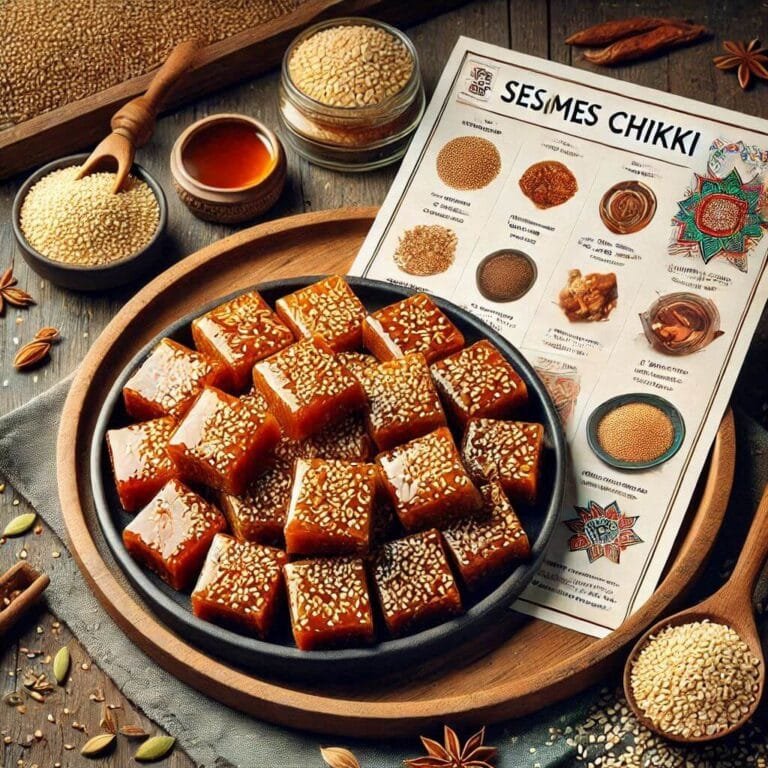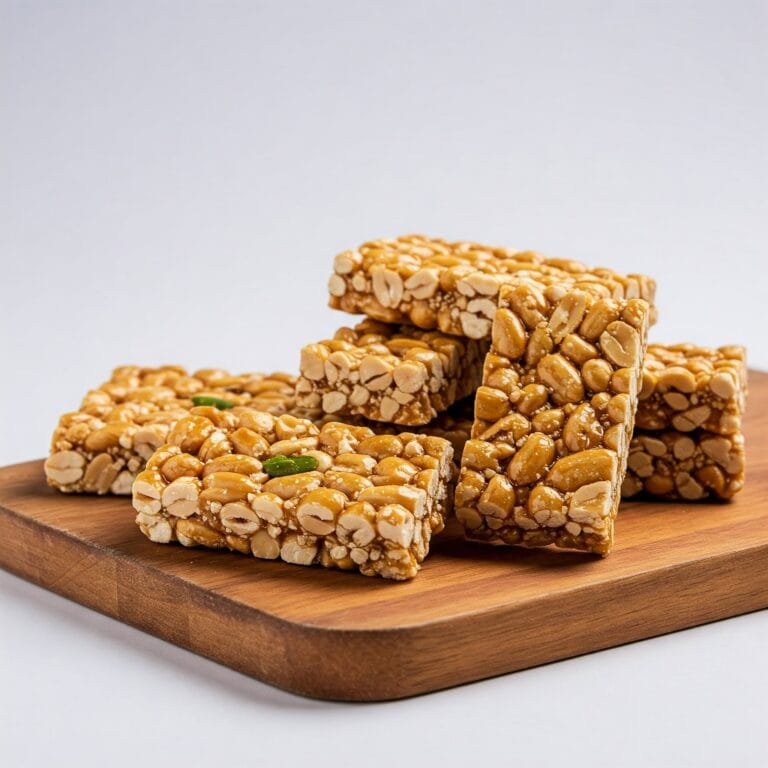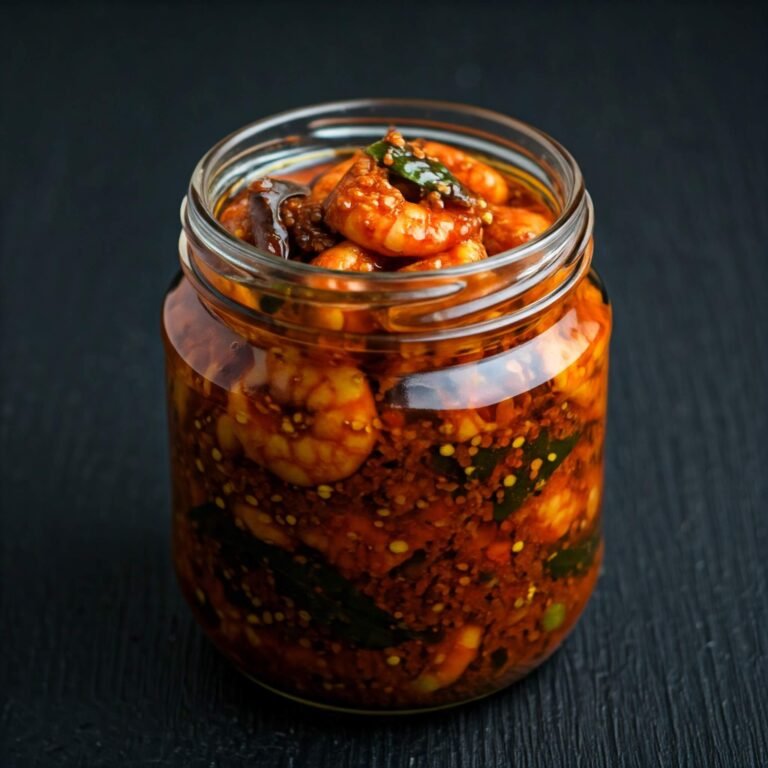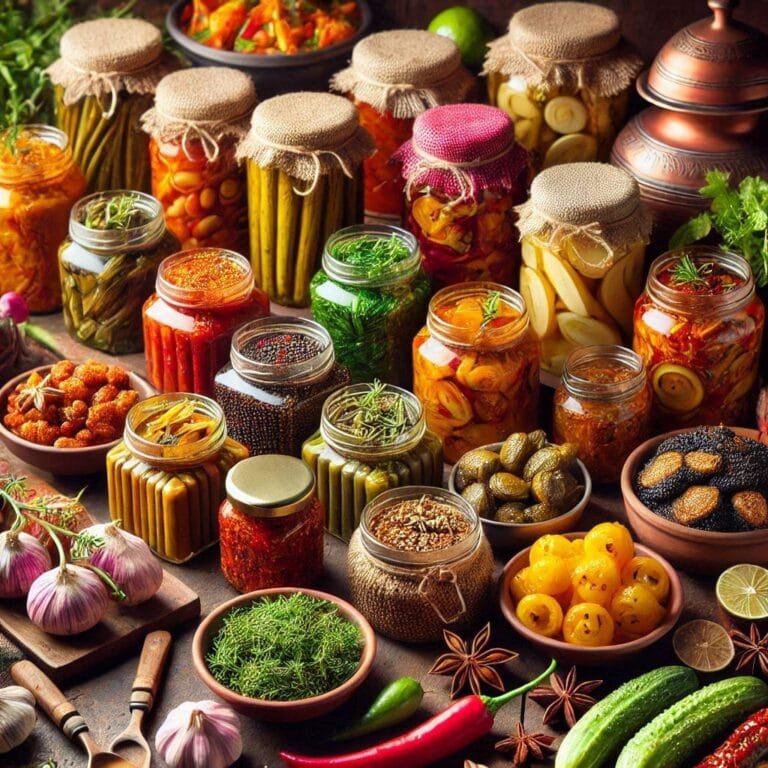What are the top 10 most popular cookies?

Table of Contents
Introduction: Why Cookies Are Loved
Cookies, with their enticing aroma and delightful sweetness, have carved a special place in the hearts of people worldwide. Their universal appeal can be attributed to several factors, including their comforting nature, the nostalgic memories they evoke, and their ability to bring individuals together in a communal experience. One cannot overlook the joy that comes from indulging in a freshly baked cookie, whether it’s at a family gathering, a festive celebration, or a simple afternoon snack.

The act of baking cookies often acts as a bridge between generations. Grandparents passing down cherished recipes to their grandchildren instills a sense of tradition and continuity. The delightful process of measuring, mixing, and baking fosters creativity and collaboration, making it a cherished activity for families. Cookies not only serve as a culinary delight but also as a means of connection, enabling loved ones to share stories and laughter over a warm treat.
Every cookie has a story, and many are tied to cherished moments in life. From the familiar sounds of a spoon meeting a mixing bowl to the satisfying crunch of biting into a perfectly baked cookie, these experiences form lasting memories. Cookies, in their many forms, cater to diverse palates, allowing individuals to explore a variety of flavors and textures. This adaptability makes them a beloved treat among people of all ages, from children to adults.
Throughout this blog post, we will delve into the top 10 most popular cookies, each representing a unique blend of tradition, flavor, and enjoyment. Whether you prefer classic chocolate chip, indulgent peanut butter, or elegant macarons, these cookies reflect why they have become a staple in global cuisine. Join us as we explore the sweet journey that makes cookies one of the most cherished treats across cultures.
Chocolate Chip Cookies: A Timeless Favorite
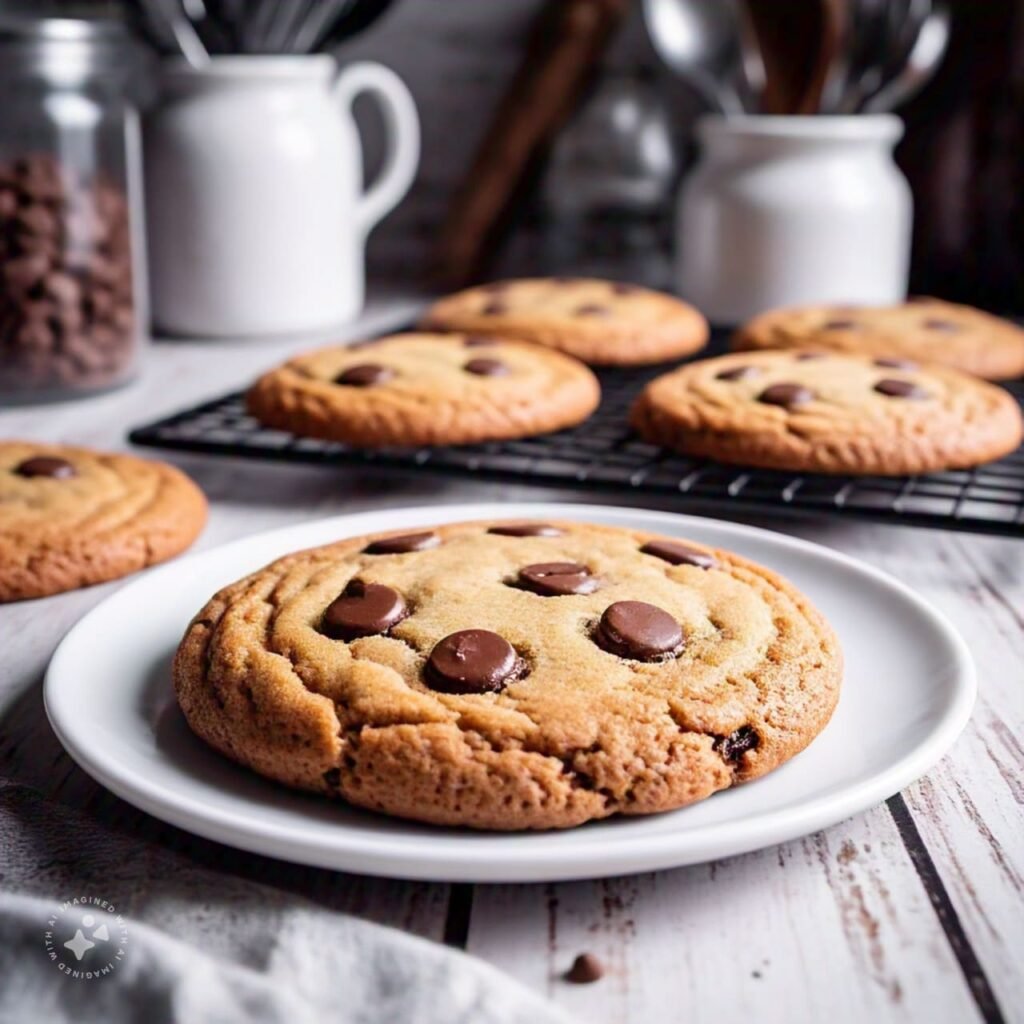
Chocolate chip cookies are undoubtedly one of the most beloved sweet treats in American households and beyond. Their inception is attributed to Ruth Wakefield, who in the late 1930s, while operating the Toll House Inn in Whitman, Massachusetts, crafted the first batch of these cookies. The story goes that she intended to create a chocolate cookie but decided to enhance her recipe by incorporating chopped chocolate. This innovative choice resulted in an unexpected delight, leading to the birth of the chocolate chip cookie.
Upon its introduction, the chocolate chip cookie swiftly gained traction, aided by the publication of Wakefield’s recipe in numerous newspapers, which helped to popularize this new confection. The recipe was later included in the Toll House Chocolate Chip Cookie book that further cemented its position as a staple in American baking. As the decades rolled on, chocolate chip cookies evolved, with variations sprouting up across the culinary landscape, maintaining their status as a timeless favorite.
Variations of the classic chocolate chip cookie recipe abound. Bakers often explore different types of chocolate, such as dark, white, or milk chocolate, adding a unique twist to the traditional flavor profile. Some even venture into the realm of flavors by introducing ingredients like peanut butter, caramel, or even spices to create distinct versions of this beloved treat. Furthermore, incorporating nuts like walnuts or pecans can add a delightful crunch, enriching both the taste and texture of the cookies.
Achieving the perfect chocolate chip cookie requires careful attention to several key factors. The dough should be chilled before baking, allowing the flavors to meld and the cookies to maintain their shape. Additionally, baking them to a golden-brown hue ensures a crispy exterior while preserving a gooey center. With these tips and variations in mind, chocolate chip cookies will remain a cherished favorite, warming hearts and homes across generations.
Peanut Butter Cookies: A Classic Indulgence
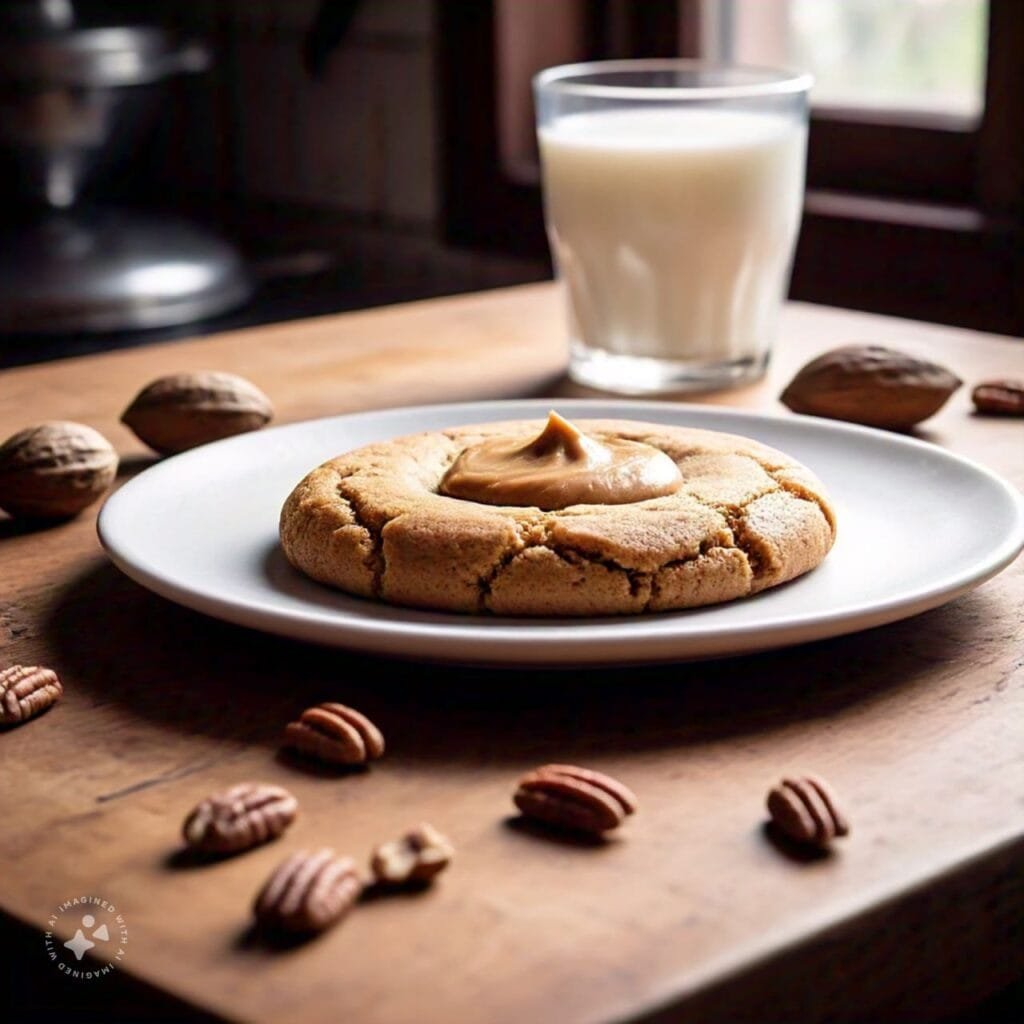
Peanut butter cookies are an enduring favorite, providing a rich, nutty flavor that has captivated taste buds for generations. The classic recipe typically combines basic ingredients such as all-purpose flour, sugar, baking soda, and of course, creamy or chunky peanut butter. For those looking to try their hand at making these delightful cookies, a simple recipe involves mixing one cup of peanut butter with one cup of granulated sugar and one beaten egg. The mixture is shaped into balls, flattened with a fork to create the iconic crisscross pattern, and baked until golden brown.
While the traditional peanut butter cookie stands alone as a delectable treat, there are numerous ways to elevate its flavor profile. Adding a sprinkle of sea salt on top before baking can enhance the sweetness and bring out the distinctive taste of the peanut butter. Another popular twist is to fold in chocolate chips for a delightful contrast. The combination of rich chocolate with the savory nutty cookie creates a symphony of flavors that appeals to many palates.
Additionally, creativity can be infused into the recipe by incorporating other ingredients. Chopped peanuts can add extra crunch, while a drizzle of melted chocolate on top offers visual appeal and adds richness. For a more adventurous approach, consider adding a touch of cinnamon or even a hint of cayenne pepper for a surprising kick. Vegan alternatives, using nut butters or maple syrup instead, also provide a great option for those with dietary restrictions.
Peanut butter cookies continue to be a staple in many households, merging tradition with innovation. Their adaptability and comforting texture make them not just a dessert, but a cherished experience. Whether enjoyed fresh from the oven or dunked into a glass of milk, these cookies are undoubtedly a classic indulgence that resonates with cookie lovers everywhere.
Oatmeal Raisin Cookies: Healthier Indulgence
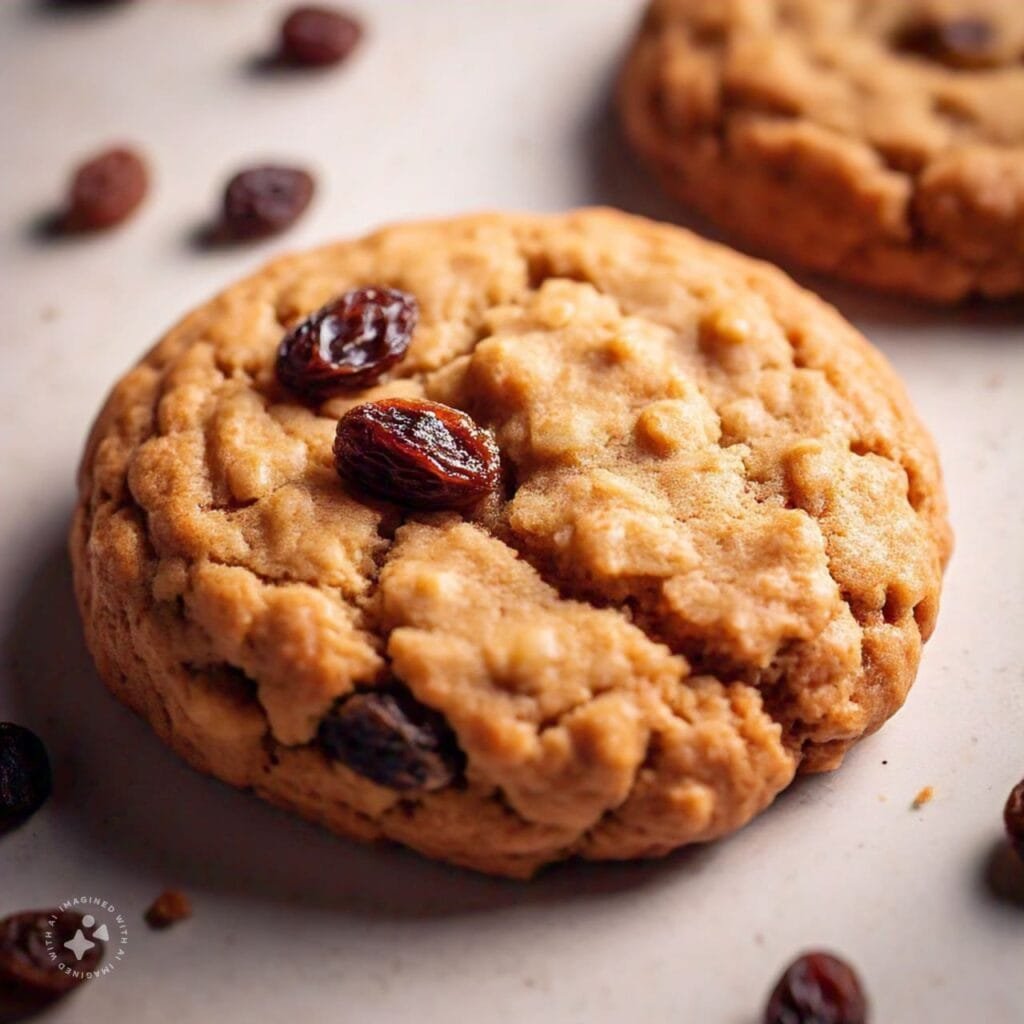
Oatmeal raisin cookies are often celebrated as a delightful yet more nutritious alternative to traditional cookies. The primary ingredients, oats and raisins, contribute significant health benefits, making these cookies a popular choice for those seeking a healthier indulgence. Oats are a great source of dietary fiber, which can aid in digestion and help maintain healthy cholesterol levels. Additionally, they provide essential vitamins and minerals such as iron, magnesium, and vitamin B6. Raisins, on the other hand, are rich in natural sugars, antioxidants, and various vitamins, offering a sweet flavor as well as nutritional value.
To ensure that your oatmeal raisin cookies remain chewy and moist, it is essential to strike the right balance in your recipe. One effective practice is to slightly underbake the cookies, allowing them to firm up as they cool. Using brown sugar as opposed to white sugar can also add moisture and enhance the flavor profile. Incorporating applesauce into the dough can further contribute to the moisture content while reducing the amount of added fat needed. Additionally, adding a touch of cinnamon not only heightens the flavor but also offers potential health benefits, including anti-inflammatory properties.
When it comes to ingredient substitutions, consider utilizing whole grain oats for an even healthier option or almond flour for those seeking gluten-free alternatives. You can also boost the nutritional value by adding ingredients such as chopped nuts, chia seeds, or flax seeds. These enhancements contribute additional fiber, protein, and healthy fats, making your oatmeal raisin cookies even more wholesome.
Incorporating oatmeal raisin cookies into your diet can be a satisfying way to enjoy a sweet treat while reaping health benefits. With thoughtful preparation and ingredient selection, these cookies can serve as a guilt-free indulgence that caters to both taste and nutrition.
Sugar Cookies: A Canvas for Creativity

Sugar cookies are a staple in the world of baking, renowned for their delightful flavor, soft texture, and versatility. Their adaptability lies in their basic ingredients, allowing bakers to infuse them with various flavors such as vanilla, almond, or lemon. This flexibility makes them an excellent foundation for creativity, enabling cookies to be molded into an array of shapes and decorated for any occasion.
One of the most appealing aspects of sugar cookies is their ability to be customized for holidays and special events. From Christmas to birthdays, these cookies can be crafted into seasonal shapes like stars, trees, or hearts, making them an ideal treat for festive gatherings. For those seeking inspiration, a simple yet classic sugar cookie recipe includes flour, sugar, butter, eggs, baking soda, and a touch of vanilla. Once baked, they provide a blank canvas ready to showcase your artistic flair.
Decoration techniques for sugar cookies are vast and varied, ranging from royal icing to fondant. Royal icing is a popular choice due to its smooth finish and ability to harden, allowing for intricate designs. Bakers can use piping bags to create beautiful outlines or fill in shapes with flood icing for a glossy appearance. Alternatively, fondant can be rolled out and cut into shapes to adorn cookies, providing a professional look with vibrant colors. For those wanting to incorporate fun and whimsy, sprinkles, edible glitter, and colored sugar can also be added, enhancing visual appeal.
Incorporating themes into your sugar cookies adds a distinct touch. For instance, floral patterns for spring events or spooky designs for Halloween can make the cookies even more memorable. The key is to allow creativity to flow, experimenting with different flavors, shapes, and decorations. Sugar cookies therefore not only satisfy a sweet craving but also serve as a perfect outlet for artistic expression, making them a beloved treat for any gathering.
Snickerdoodles: Cinnamon Sugar Delight
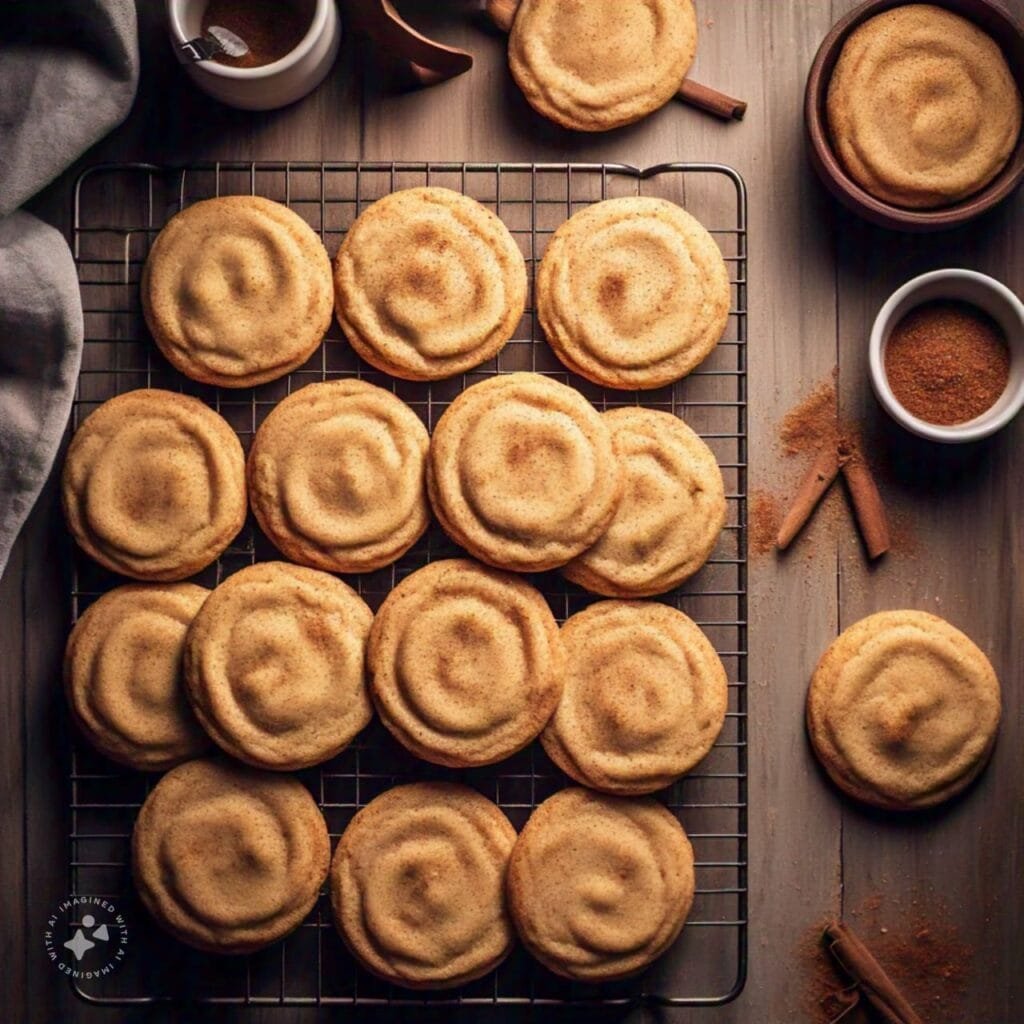
Snickerdoodles are a beloved cookie distinguished by their unique combination of soft, chewy texture and the harmonious blend of cinnamon and sugar. This delightful treat is particularly popular during the holiday season, capturing the essence of festive baking with its warm, inviting flavors. The origins of snickerdoodles date back to the 19th century, with their roots often traced to New England, although their precise beginnings remain somewhat mysterious. Some suggest that the name may be derived from the German term “Schneckennudeln,” which refers to a type of cinnamon roll, reflecting the influence of German immigrants in America.
What sets snickerdoodles apart from other cookies is their characteristic coating of cinnamon sugar before baking. This simple yet effective technique enhances the overall flavor profile, offering a delightful burst of sweetness and spice in every bite. The classic recipe generally calls for basic ingredients such as flour, butter, sugar, and eggs, along with the defining addition of cream of tartar. This ingredient not only gives snickerdoodles their signature tang but also contributes to the cookie’s soft, pillowy consistency.
To achieve the perfect snickerdoodle, consider these tips: First, ensure the butter is at room temperature for easier blending with the sugar, resulting in a smoother dough. Second, be mindful of the baking time; cookies should be removed from the oven just as they begin to set, allowing them to retain that coveted chewiness. Finally, let them cool on the baking sheet for a few minutes before transferring to a wire rack, as this helps them firm up without losing their soft texture. When prepared with care, snickerdoodles can become a cherished addition to any holiday cookie platter, embodying the spirit of celebration and warmth.
Gingersnaps: Spicy and Sweet Temptation
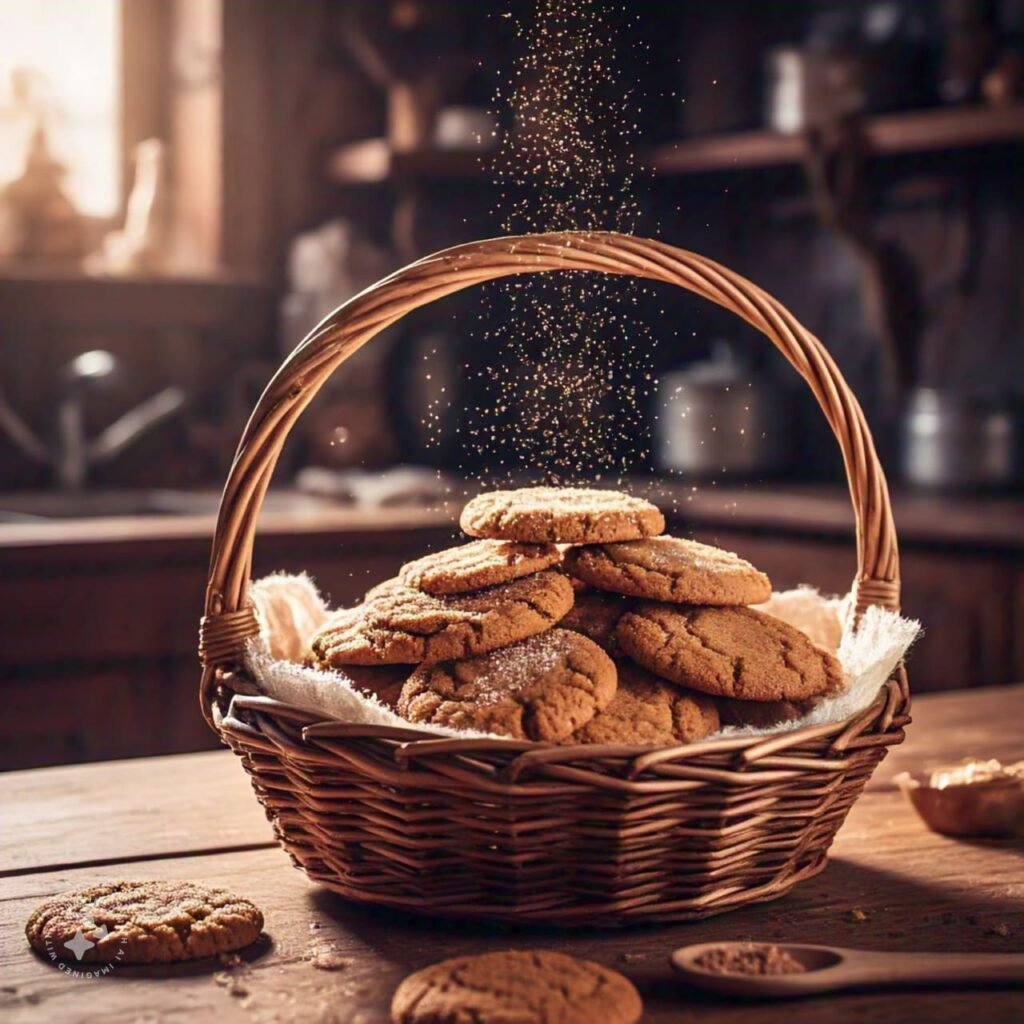
Gingersnaps are a delightful addition to the cookie pantheon, celebrated for their unique flavor profile that balances spice and sweetness. The defining characteristic of gingersnaps is their distinctive blend of ingredients, which typically includes ground ginger, cinnamon, and molasses. This combination not only imparts a warm, spicy nature to the cookie but also provides a subtle sweetness that is truly irresistible. These cookies are especially favored during the holiday season, often made in large batches to share among family and friends. Their spiced aroma fills homes with a sense of comfort, reflecting the joy of holiday gatherings.
Traditional recipes for gingersnaps often call for a firm dough that is rolled out and cut into shapes before baking. The balance of ingredients ensures that the end product is not only flavorful but also crunchy. For those looking to elevate their gingersnap experience, variations abound. Some recipes incorporate additional spices like nutmeg or allspice for an even more complex flavor, while others might introduce chocolate or dried fruit to enhance sweetness. The possibilities are vast, allowing bakers to put their own spin on this classic treat.
Achieving the perfect crunchiness in gingersnaps can be a bit of an art. A few tips can help ensure these cookies turn out just right. Firstly, it is important to measure the ingredients accurately and to thoroughly integrate the spices into the dry mix. Secondly, the baking time should be monitored closely; a few extra minutes can transform a chewy cookie into a satisfyingly crunchy one. Lastly, allowing the cookies to cool completely on a wire rack before storing can help maintain their texture. Such nuances contribute to the enduring popularity of gingersnaps, making them a cherished staple throughout the festive season.
Shortbread Cookies: Buttery Bliss

Shortbread cookies are revered for their rich, buttery flavor and melt-in-your-mouth texture, making them a quintessential treat in the world of confections. Originating in Scotland, shortbread has transitioned from a festive indulgence to an everyday snack. This simplicity, combined with their delicate yet satisfying taste, has garnered shortbread cookies a dedicated fan base worldwide. The fundamental ingredients are few: butter, sugar, and flour, which unite to create the perfect balance of sweetness and richness.
To prepare these delightful cookies, one can follow a classic recipe that calls for one part sugar, two parts butter, and three parts flour. Mixing these ingredients until they form a smooth dough is crucial, as overworking can affect the texture. After shaping the dough into rounds or squares, a gentle scoring or prickling with a fork ensures the cookies bake evenly and develop that traditional shortbread appearance. The secret to achieving that coveted melt-in-your-mouth texture lies in the use of high-quality butter and the baking temperature; a lower temperature allows for gentle cooking, resulting in a tender cookie.
Though the classic version is extraordinarily pleasing, shortbread cookies offer ample room for creative variations. For a delightful twist, one might consider adding flavors such as vanilla extract, almond extract, or even incorporating finely chopped herbs like rosemary or lavender. Chocolate-dipped options elevate the experience by adding a contrasting texture and flavor profile. Additionally, one can experiment with incorporating zest from citrus fruits, which lends a refreshing brightness to the buttery base.
Incorporating outer ingredients or different preparation techniques can enhance the flavor of shortbread cookies while still retaining their essential character. Their classic recipe makes them versatile enough to serve as the base for a variety of desserts, delighting guests at any occasion. Bakeries and home kitchens alike continue to celebrate the understated elegance of shortbread, proving its timeless appeal.
Macarons: A French Culinary Delight

Macarons, with their delicate shells and exquisite fillings, epitomize French pastry artistry. These vibrant, sandwich-like cookies consist of two light and airy meringue shells that are made from almond flour, egg whites, and powdered sugar. The meticulous process of achieving their signature texture and flavor requires attention to detail and precision. The result is a confection that is not only visually stunning but also packed with delightfully complex flavors.
To create the perfect macaron, one must first master the art of meringue. The beating of egg whites to achieve stiff peaks is critical, as it provides the structure necessary for these cookies. It is advisable to incorporate a small amount of food coloring to enhance their visual appeal, creating an array of hues that tempt the eyes. When mixing in the almond flour and powdered sugar, the technique known as “macaronage” is vital; it involves folding the dry ingredients into the meringue until a glossy batter forms. This stage requires a gentle hand to prevent overmixing, which can lead to flat and dense cookies.
Once baked, macarons should be allowed to mature for at least 24 hours in the refrigerator. This resting period enables the flavors to meld and the texture to become wonderfully chewy on the inside while remaining crisp on the outside. When it comes to fillings, the options are limited only by imagination. Traditional choices include luscious buttercreams, rich ganaches, or fruity jams. Each filling can be tailored to enhance or contrast the flavor of the macaron shell—think salted caramel paired with a chocolate shell or raspberry paired with a vanilla shell. In every bite, macarons offer a symphony of flavors and textures, reflecting the elegance of French patisserie.
Alfajores: A Sweet South American Delight
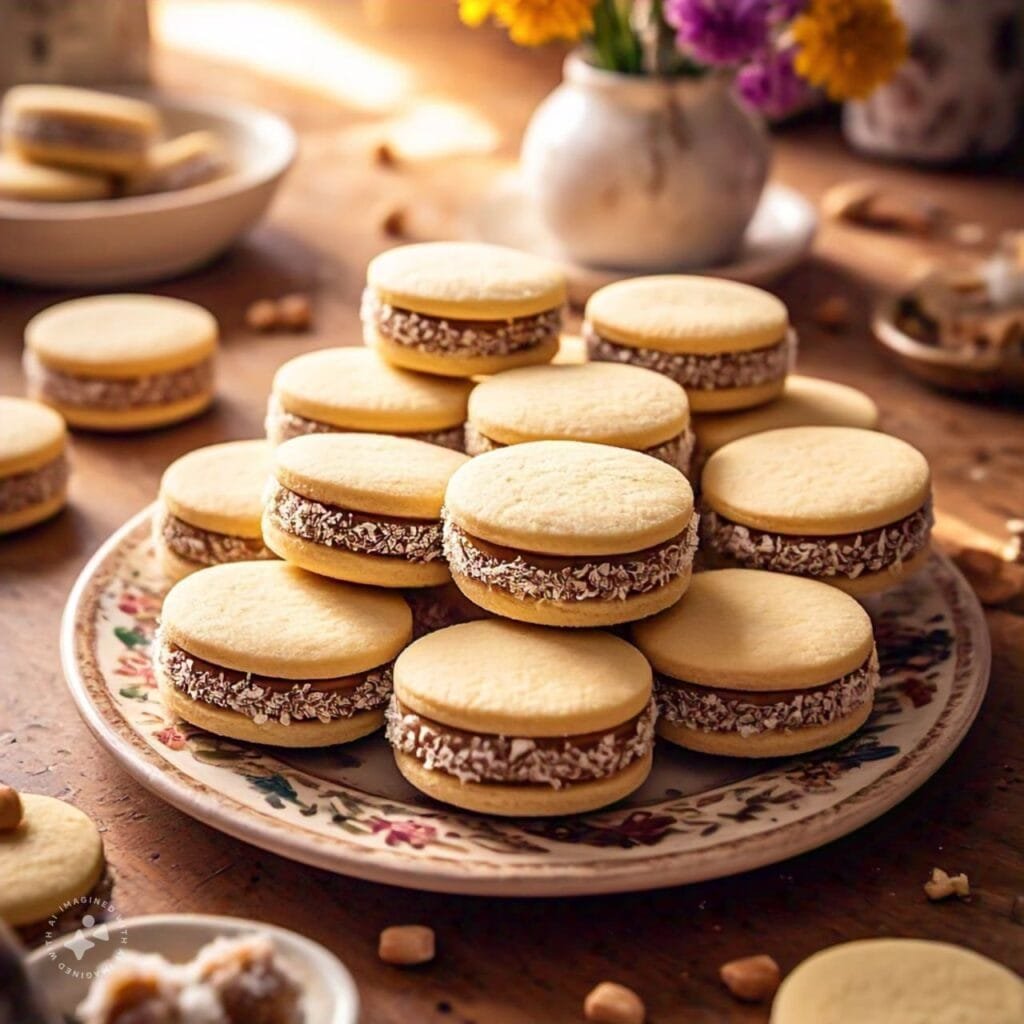
Alfajores are delightful cookies that have transcended regional boundaries, becoming a beloved treat across South America. Traditionally, these two-layered confections are filled with rich dulce de leche, a thick caramel-like spread. Their origins date back to the Moorish influence in the Iberian Peninsula, where they were known as “alajú.” This treat made its way to Latin America through Spanish colonizers and eventually evolved into the distinctive alfajores we enjoy today.
Each country has embraced the alfajor, putting its own spin on this classic cookie. In Argentina, alfajores are often coated in powdered sugar or chocolate, served as a sweet ending to a meal or as a delightful afternoon snack alongside a cup of mate. Colombia, on the other hand, has a different approach, with its version featuring a more crumbly texture and sometimes incorporating coconut flakes. In Peru, alfajores are similarly well-loved, frequently flavored with citrus notes or a touch of chocolate, and offering a unique taste experience.
For those eager to try their hand at making alfajores at home, here is a simple recipe to get started. You will need 1 cup of butter, 1 cup of sugar, 2 cups of all-purpose flour, 1 cup of cornstarch, two egg yolks, and vanilla extract. Begin by creaming the butter and sugar until light and fluffy. Then mix in the egg yolks and vanilla. In a separate bowl, combine the flour and cornstarch, gradually adding it to the butter mixture until a smooth dough forms. Roll out and cut into circles, baking them until they turn a light golden color. Once cooled, sandwich two cookies together with dulce de leche and dust with powdered sugar for a perfect finish.
The versatility of alfajores allows for numerous variations, including flavors like chocolate, orange, or even a sprinkle of nuts. This makes them a favorite not just for celebrations but as a comforting treat to share with family and friends throughout the year.
Conclusion: The Joy of Baking and Sharing Cookies
Baking cookies is not merely a culinary endeavor; it is an art form that fosters creativity and brings joy to both the baker and the consumer. The process of blending ingredients, experimenting with flavors, and watching cookies rise in the oven is an experience that many cherish. Each batch of cookies represents a labor of love, and the warmth of freshly baked goods evokes a sense of comfort and nostalgia. These delightful treats are often associated with special moments and celebrations, making the act of sharing them all the more meaningful.
Engaging in the art of baking allows individuals to express their unique tastes and preferences. From classic chocolate chip cookies to exotic flavors like matcha or lavender, there is an endless array of possibilities to explore. Encouraging readers to try new recipes can lead to delightful surprises and encourage a spirit of culinary adventure. As bakers experiment with different types of cookies, they can incorporate various ingredients such as nuts, dried fruits, or even spices, enhancing the flavor profile and texture of their creations.
Moreover, baking cookies provides an excellent opportunity to bond with family and friends. Gathering in the kitchen to mix dough, shape cookies, and share in the joy of the final product can create lasting memories. Whether it is a holiday tradition or a spontaneous gathering, the act of baking fosters connection and strengthens relationships. The simple act of exchanging cookies with loved ones serves as a reminder of the joy that comes from sharing and hospitality.
Ultimately, cookies are more than just sweet treats; they symbolize love, creativity, and connection. By encouraging exploration and experimentation within the realm of baking, we can celebrate the joy that cookies bring into our lives.


